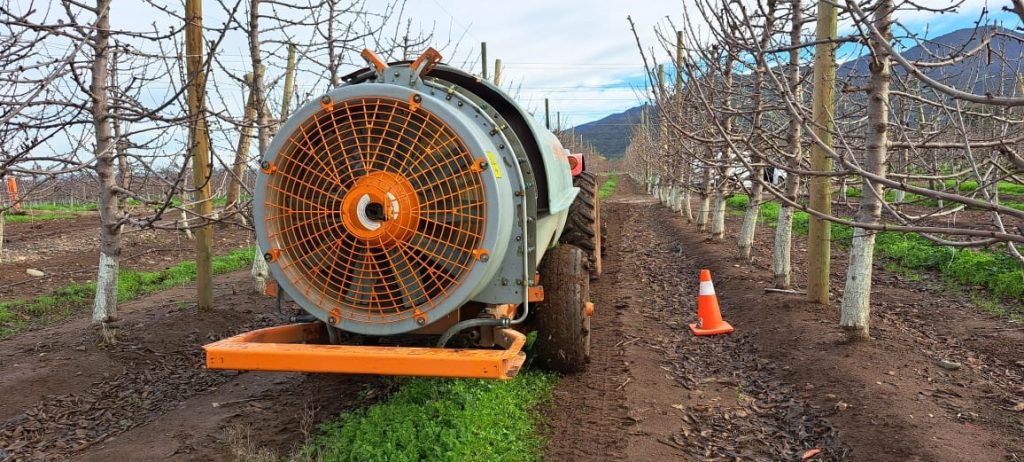When and why should copper be applied in cherry orchards?
“We can talk about three periods: winter, autumn (leaf fall), and the beginning of spring. The idea is to maintain low populations of Pseudomonas, especially during critical moments of infection. These critical moments are determined by the plant’s phenology, closely related to the climate. In simple terms, during dry and hot periods, or conversely, very cold periods, the populations remain very low. Then comes springtime, where the temperatures are moderate, with the possibility of frost, but conditions recover and there are also susceptible tissues such as flowers. This is the moment of the highest risk due to significant population increases that could trigger an infectious process. In autumn, as humidity increases with moderate temperatures and the presence of wounds due to leaf fall, it becomes another critical moment to take care of.
What is the relevance of copper in the phytosanitary program?
The fungicidal and bactericidal properties of copper are well-known and recognized. Its use in modern agriculture probably consolidated when grapes were ‘painted’ with Bordeaux mixture in Europe to prevent consumption before harvest. They found out that it effectively stopped significant fungal diseases, and since then, its use became widespread globally. Today, technologies have been developed using copper nanoparticles as a powerful source of pathogen control. Therefore, it is a fundamental tool to maintain the phytosanitary status of stone fruits and walnut crops, but it must be used rationally.
Should copper be applied regardless of the geographical location of the orchard?
I believe it is a biocide that we cannot overlook in any area. Climate change and new varieties leave us with uncertainties and risks. Hence, we must minimize uncertainties associated with crop protection. Considering that this type of product acts preventively, there is not much room for speculation. Depending on the area, the more southern it is, the higher the risk. Thus, we might need to shorten application windows or add other strategies to deal with the possibility of higher infections.
What are the main recommendations when applying copper?
Ideally, from my perspective (although I understand it might not be easy for the producer), the copper should always be applied alone in the tank, aiming for the release of Cu+2 without interference. Some copper sulfate pentahydrate products require the use of pH correctors to increase the release of ionic copper. So when using these products, always read the usage recommendations. Personally, my preference (something we are also studying in the field) is to use copper hydroxide or cuprous oxide during winter and then flank this period, meaning leaf fall (autumn), and the beginning of spring with formulated copper sulfate products. This way, we reduce the total amount of copper applied while maintaining constant protection of the orchard.










